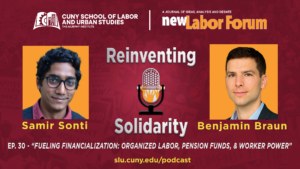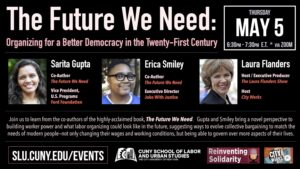Union Organizing Against the Odds

NLF Highlights for May
However, well-financed employer resistance to unionization remains an often-unsurmountable obstacle to unionization. Although the National Labor Relations Act prohibits employers from intimidating, coercing, or firing workers for participation in union organizing drives, the penalties are so low as to provide no real disincentive to employers from doing so. While the passage of the Protect the Right to Organize (PRO) Act would make a big difference, that seems very unlikely in the current Congress. In a spring 2022 article for New Labor Forum, Stuart Eimer and Rob Hill, describe large-scale private sector organizing that has succeeded against these odds. They examine how it is that Local 32BJ, of the property services division of the Service Employees International Union, organized over 100,000 new members into the union during the past two decades. Key to that success, they argue, is the local’s allocation of 20-30 percent of its budget to task of strategic, regionally targeted organizing, as well as hiring and training its own members to serve as the backbone of these efforts. This article is part of the journal’s ongoing commitment to host discussion and debate regarding the prospects for mass organizing.
Table of Contents
- Winning Against the Odds: The 32BJ SEIU Organizing Model / Rob Hill and Stuart Eimer, New Labor Forum
- Reinventing Solidarity Episode 30: “Fueling Financialization: Organized Labor, Pension Funds, & Worker Power“
- “The Future We Need: Organizing for a Better Democracy in the Twenty-First Century,” Thursday, May 5, 2022 – CUNY SLU Event
Winning Against the Odds: The 32BJ SEIU Organizing Model
by Rob Hill and Stuart Eimer, New Labor Forum
SEIU Local 32BJ offers a case study of how unions can win, especially in the private sector which has seemed impervious to organizing. Over the last two decades, 32BJ has organized over one hundred thousand new members who others said could not be organized because they were low-wage subcontracted workers, because of their immigration status, or because racial, ethnic, and language divides could not be overcome.
Read the full article here

In 2021 the pension assets of U.S. workers stood at 35 trillion dollars and amounted to fully 62 percent of all global pension assets. For almost half a century, this money has fueled the growth of the asset management sector, the likes of BlackRock, Vanguard, and Fidelity Investments to name only a few. New Labor Forum author Benjamin Braun casts a critical eye on the investment practices of collectively bargained Taft-Hartley pension funds which have contributed so significantly to the rise of a bloated financial sector. He also discusses efforts to redirect labor’s capital to the benefit of workers and to investment in public goods projects, such as infrastructure and renewable energy.
Listen here: SLU.CUNY.EDU/PODCAST




